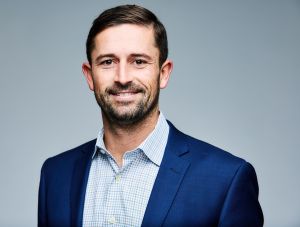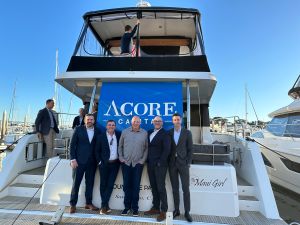[ad_1]
As the sun set on the Mortgage Bankers Association’s Commercial/Multifamily Finance Convention and Expo (also known as MBA CREF) earlier this week, attendees told Commercial Observer they were prepared for ongoing uncertainty in the commercial real estate market, and a slightly more subdued 2024 transaction-wise until interest rate stabilization is truly realized (as opposed to projected).
While the Federal Reserve’s December meeting buoyed optimism that carried over to early January industry events like CREFC (“I think people were just happy to be in Miami in January too,” one attendee shrugged) general sentiment at MBA CREF was a more cautiously optimistic approach with more measured expectations around transaction volumes rebounding.

“I think the sentiment from everyone is relatively optimistic with some realism built in,” Michael Lorch, head of commercial real estate at Axos Bank, told Commercial Observer. “It does however seem a little bit more transaction forward than last year, so that’s good.”
While the optimism around interest rate cuts ensues, Lorch said his take is that rates will stay higher for longer.
“That’s my personal view,” he said. “And in that scenario, cap rates stay elevated or start to elevate, and it continues to be a little bit more difficult for people to transact.”
With several banks remaining on the sidelines as this volatility continues, Axos is working to differentiate itself from the herd.
“We’re focused on consistently being able to offer our products throughout a cycle,” Lorch said. “I believe we’ll continue to transact and find the opportunities that work for us, but overall I think it’s going to be challenging for banks and private credit to be patient for the right situations, and that’s where we differentiate ourselves: structure, patience and discipline. Those things are more important now than they have ever been in the last couple of years.”
In another meeting, Colliers’ Jonathan Lee and Shahin Yazdi walked CO through what they’re seeing from their seats in the industry from their L.A. base.
“I think the biggest trend that we’re seeing is that everyone’s got capital, and you can tell people are starting to deploy that capital in very strategic ways,” Yazdi said. “You have groups that are coming out with a lot of pref and mezz buckets, thinking there’s going to be opportunities to recapitalize some deals where the borrowers fall short.”
Yazdi said he’s also seeing some groups specifically target office in the search for yield.

“People want yield and they’re willing to take on a little more risk, whether that means doing office, hospitality or other things that they weren’t really doing before,” he said. “Then, there are the groups that were doing $100 million deals and up that are now targeting smaller deals now and willing to go below their standard minimums.”
As for where that yield can be found? Office is one bucket, but “we talked to one group that actually is lending on cannabis [retail],” Lee said. “Again, there’s yield there because not that many people are doing it.”
Overall, lender appetite is still pretty much the same, targeting the darlings of the asset classes, Lee said. “Everyone’s really focused on multifamily and industrial overall, but there is actually a burgeoning debt space for office.”
When it comes to markets, “I do feel that lenders are cautious when it comes to certain big cities,” Yazdi said. “So, Downtown Portland, Downtown San Francisco, Downtown L.A. For some lenders, that just spreads to the whole city,” Yazdi said. “They don’t bifurcate Downtown from the Westside of L.A.”
On the flip side, others are branching out into new territory.

“A lot of lenders — bigger, more institutional lenders that historically wouldn’t be in secondary markets —- are now really pursuing those opportunities because you’re seeing positive trends they’re OK with and they want to be in those markets,” Lee said.
It’s a challenging market for all deal parties today, but “the best part is we get to really be creative and how we structure things,” Lee said. “Two years ago we were running the [financing] process and jockeying lenders within five basis points of each other and executing. Today it’s much more structured and much more nuanced. I think that’s the exciting part.”
As for the hardest part of their business today?
“For me, one of the hard parts right now is seeing some people, whether or not they’re our clients, just be in a really difficult situation. This is a market where people are facing some level of difficulty, and at the end of the day we’re human beings, and we care about people. You just never want to see that.”
After a busy day of back-to-back meetings, akin perhaps to speed dating, attendees relaxed and networked at the Monday night parties, with firms including Acore Capital, Barclays, Société Générale, Ready Capital and others holding events.

Acore once again held its event on a boat docked in the marina outside of the conference hotel, with D.J. Tony Fineman — head of East Coast originations for Acore — playing tunes for those on board.
As the industry prepares for further choppy waters, there’s at least a glimpse of smoother sailing at some point soon.
Until next year.. in the words of Ron Burgundy, “Stay classy,” CRE.
Cathy Cunningham can be reached at ccunningham@commercialobserver.com.
[ad_2]
Source link



